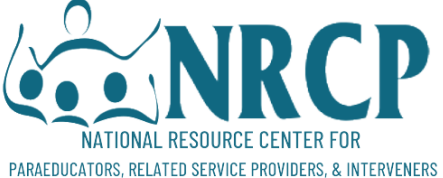A review of recent literature has identified several factors that have rekindled interest in paraeducator employment, roles, supervision, and preparation.. In several cases federal legislative actions brought about surges in paraeducator employment (i.e. The Education of the Handicapped Act, 1986 that required LEAs to provide services to children ages 3 to 5 who have disabilities or chronic health needs that place them at risk, and IDEA, 1990 that recognized the need for vocational and other community based programs to prepare learners with disabilities to make the transition from school to work.) Throughout the 1990s amendments to various federal laws stressed the need for but did not mandate SEAs, LEAs and IHEs to strengthen and expand professional development opportunities to assure the availability of highly skilled personnel at all levels including, paraprofessionals. (Provisions in IDEA, 1997 and the NCLB, 2001 that require SEAs to set standards for paraeducator employment, supervision and preparation are discussed more fully in Part III.) In addition, Pickett (2003) has identified additional trends and issues that have existed for several years that led to increased paraeducator employment and increased need for standards for their role, preparation and performance. They include, but are not limited to:
- Ongoing efforts to more effectively serve children and youth with disabilities in learning environments that are centered on their inclusion in general education and community based school-to-work programs (Downing, Ryndak & Clark, 2000; Giangreco, Edelman, Luiselli & McFarland, 1997; Marks, Schrader & Levine, 1999; Pickett, 1999; Riggs & Mueller, 2001; Rogan & Held, 1999).
- Increasing num bers of learners nationwide, who come from diverse racial, ethnic, cultural, and linguistic heritages (Bureau of the Census, 2001; Bureau of Labor Statistics, DOL, 2000; Genzuk & Baca, 1997; Haselkorn & Fideler, 1996; NCES, 2000; OSEPRS, 2000; Rueda & Monzo, 2000).
- Growing demands for improved and personalized instruction and compensatory education for learners who come from economically and educationally disadvantaged backgrounds (United States Department of Education, 1999; Haselkorn & Fideler, 1996).
- Continuing shortfalls of licensed/credentialed teachers in virtually all program areas (American Association for Employment in Education, 1999; NCES, 1995 & 2000; OSEPRS, 2000; Recruiting New Teachers, 1997).
- Evolving roles of teachers as managers of instructional programs, leaders of instructional teams, and participants in school based governance and decision ó making activities (Bauch & Goldring, 1998; Drecktrah, 2000; French, 2001; French & Pickett, 1997; Lieberman & Miller, 2000; Pickett, 1999; Pickett, Vasa & Steckelberg, 1993; Pipho, 2000; Wallace, Jongho, Bartholomay, & Stahl, 2001).
- Ongoing efforts to more effectively serve children and youth with disabilities in learning environments that are centered on their inclusion in general education and community based school-to-work programs (Downing, Ryndak & Clark, 2000; Giangreco, Edelman, Luiselli & McFarland, 1997; Marks, Schrader & Levine, 1999; Pickett, 1999; Riggs & Mueller, 2001; Rogan & Held, 1999).
- Increasing numbers of learners nationwide, who come from diverse racial, ethnic, cultural, and linguistic heritages (Bureau of the Census, 2001; Bureau of Labor Statistics, DOL, 2000; Genzuk & Baca, 1997; Haselkorn & Fideler, 1996; NCES, 2000; OSEPRS, 2000; Rueda & Monzo, 2000).
- Growing demands for improved and personalized instruction and compensatory education for learners who come from economically and educationally disadvantaged backgrounds (United States Department of Education, 1999; Haselkorn & Fideler, 1996).
- Continuing shortfalls of licensed/credentialed teachers in virtually all program areas (American Association for Employment in Education, 1999; NCES, 1995 & 2000; OSEPRS, 2000; Recruiting New Teachers, 1997).
- Evolving roles of teachers as managers of instructional programs, leaders of instructional teams, and participants in school based governance and decision ó making activities (Bauch & Goldring, 1998; Drecktrah, 2000; French, 2001; French & Pickett, 1997; Lieberman & Miller, 2000; Pickett, 1999; Pickett, Vasa & Steckelberg, 1993; Pipho, 2000; Wallace, Jongho, Bartholomay, & Stahl, 2001).
